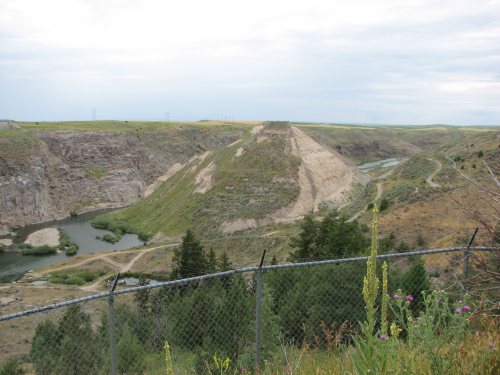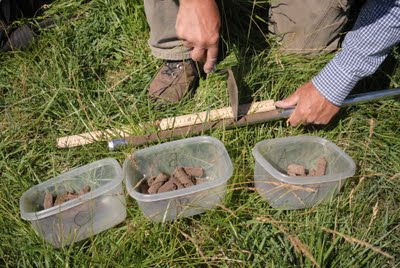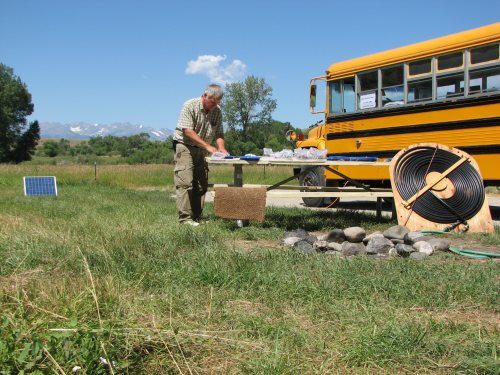 |
 |
 |
| Top, the remains of Teton Dam near Newdale, Idaho. Middle, taking core samples in eastern Idaho. Bottom, drying core samples for processing along the Yellowstone River. (Solar hot water heater at right.) |
With all the emphasis in the climate conversation on carbon, we sometimes forget that water vapor is the number one greenhouse gas. Without water vapor in the atmosphere, the earth would be a ball of ice even in summer, as Irish physicist John Tyndall recognized in 1859.
About a third of incoming solar energy is taken up by the evaporation of water, mostly from the oceans. Photosynthesis, which drives the carbon cycle, uses much less solar energy, much less than 1 percent of incoming solar. Yet this production of biomass, and the foodwebs and biodiversity it helps generate, is the primary factor for effective water cycles on land as these videos demonstrate. Without biomass to build and maintain them, and to slow water, our soils would wash into the sea even faster than some of them are now.
There are some satellite studies that indicate that there may be 5 to 7 percent more water vapor in the atmosphere today than there was in 1950. This reflects an intensification of the water cycle, where rainfall as well as runoff and evaporation accelerate. With desertification and degradation of soils, less water is retained, less biomass is produced, and the vicious cycle continues.
The one way to ameliorate this is to get more carbon into soils. Water will follow.
Water is the more immediate concern of people around the world than carbon, but the carbon cycle in large part governs the water cycle. It may also be a coincidence that carbon, both in the atmosphere and in the soil, is currently easier to measure accurately than water, because it is more stable, and not subject to phase changes between solid, liquid, and gas. These are reasons why carbon rather than water is the focus of the Soil Carbon Challenge.
Recent Posts
Archive
Categories
- Events (2)
- policy and framing (21)
- ruminations (3)
Tags
- atlas (2)
Authors
- Peter Donovan (135)
- Didi Pershouse (3)